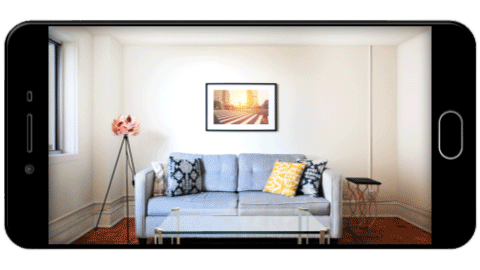In the event of unexpected or unforeseen instances, getting instant customer support and claims settlement reduces the potential for customer churn during critical customer touch points. However, these processes are iteratively long and cumbersome. For example, typical claims settlement involves inspection, documentation, submitting documents and proofs, and finally the settlement. Fortunately, all these stages can be transformed with nearly real-time analysis using Augmented Reality (AR) technology. Augmented Reality makes use of real-time digital content like audio, video, text, and images to enhance the real environment.
In fact, not only claims, but AR can also enhance other aspects of insurance like- customer service, damage estimation, remote guidance, and customer education.
Augmented Reality: a solution to the timeless insurance concerns
Augmented reality technology has been in existence since 1968; however, it is only recently that industries have realized its true benefits. Many industries have already adopted AR and VR technologies commercially. For instance, we see VR flight simulators, virtual tours & workspaces, and even AR advertisements.
Now is the time for insurers to leverage this technology to resolve the pressing concerns.
Risk assessment & mitigation
Augmented reality and virtual reality opens several new avenues to minimize cost and loss ratio through risk assessments. While augmented reality adds elements to the visual environment, virtual reality replaces the original visuals with the projected ones. Both technologies are useful to analyze customers’ behavior and intent.
For example, Ready-Assess™ developed by the Center for Injury Research and Prevention (CIRP) and Diagnostic Driving Inc. assesses a driver’s ability to drive safely and avoid collisions. The Ohio Department of Public Safety plans to use the system as a pre-qualifier to taking the on-road exam.
Auto-insurers have started to consider virtual driving tests to determine whether someone is a safe driver before insuring. Similarly, actuaries can navigate a building before it’s built through AR and propose better insurance estimates.
Marketing/customer education/customer engagement
AR simulation is a new marketing tool for insurers. It serves the two-fold purpose of educating customers as well as marketing.
For example, Liverpool Victoria- one of the UK’s largest insurance companies interacts with customers coupling newspaper flyers and augmented reality technology.
When someone scans the flyer, a 3D model house appears. Customers can further explore insurable things in the house. This simple playful experience gives an idea to the customers about insuring their belongings, which they might have never thought of.
Another interesting augmented reality use case in insurance is that of Allianz, a German international financial services company. They’ve built an immersive experience for users about the possible risks in day-to-day life.
Customer service – claims settlement and remote assistance
The claims settlement for property damage is often cumbersome. It involves a member from the insurer to visit the property, inspect the damage, estimate, and process the claim. Some insurers like ICICI Lombard attempted to speed up the process by approving claims through video calls. Augmented reality can, however, give a new dimension to remote customer service by delivering more accurate details.
For instance, with PNB MetLife India’s ConVRse application, customers can speak to a virtual assistant- Khushi in a 3D simulated room. It hosts a number of services like easy access to information, service requests like account updation, claims, and feedback.
Damage estimation
Augmented Reality can help insurers to address the operational challenges due to physical distance.
There was a time when Farmers Insurance used to send adjusters on the field to train damage assessment due to catastrophes. Today, with VR and AR, employees can learn six different floor plans and 500 different damage scenarios, without actually visiting the affected zone.
Symbility Video Connect is an AR-based live collaboration tool, that initiates documentation at the first notice of loss. Policyholders can interact with adjusters through tablets and smartphones. Through the app, an adjuster can measure the damage, file them, and thus improve the settlement time.

Image: claimsjournal.com
Remote guidance to agents and employees
Dr. Daniel Neubauer, Former Global Head of Learning Design and Lead of Zurich Leadership Development Curriculum says – “The challenge with training 50 people is how you direct them. Augmented reality allows people to self-direct.“
Zurich Insurance uses AR glasses to help field workers and risk engineers work more efficiently, safely and collaboratively. It is a great wearable alternative to finding instructions on laptops and papers.
AR in Insurance: Potential Benefits
Accenture estimates that Insurers can reap 10-20% more profit annually by investing in intelligent solutions. Working with augmented reality can transform the ways agents interact with customers, enforce policies, and assess claims.
Also read – Top 25 Augmented Reality use cases across industries
We’re technology solution providers for the new-age digital insurer. Mantra Labs specializes in AR-based experiential solutions for the insurance industry. Drop us a line at hello@mantralabsglobal.com to know more.
Knowledge thats worth delivered in your inbox






